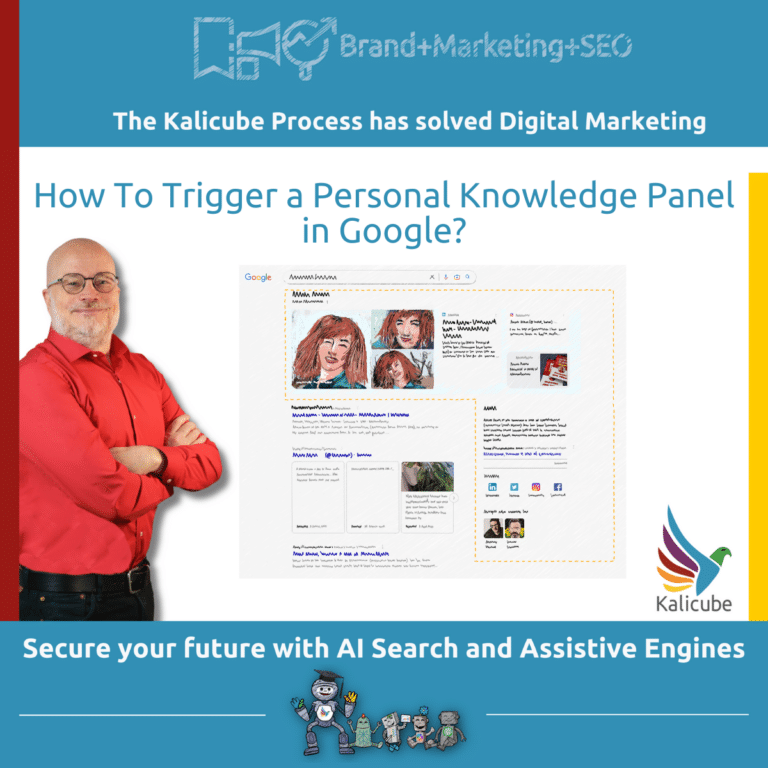The Kalicube Process Framework: Control the Narrative, Own the Market, Monetize the Brand
This framework integrates multiple perspectives into a cohesive strategy for brand growth and customer engagement
| Funnel Stage | Machines’ Perspective | Company’s Perspective | User’s Perspective |
|---|---|---|---|
| Awareness | Understandability | Visibility | Qualified Reach |
| Consideration | Credibility | Influence | Competitive Dominance |
| Decision | Deliverability | Control | Buyer Certainty |
Together, these four columns create a robust, integrated approach that ensures alignment across technology, internal strategy, and customer experience.
- Machines’ Perspective: Focuses on how algorithms understand and deliver your brand, ensuring that it’s clear, credible, and accessible.
- Company’s Perspective: Highlights how the brand is managed internally, with a focus on commanding the narrative, shaping perception, and amplifying impact.
- User’s Perspective: Aligns with the customer journey through the funnel, from attracting qualified leads, to gaining a competitive edge, to securing buyer confidence.
- Funnel Stage: Maps each phase of the user’s journey to traditional marketing funnel stages - Awareness, Consideration, and Decision.
Mapping the brand’s perspective to the machine’s perspective
When you map the brand’s perspective to the machines’ perspective, you get a clear alignment of internal strategy with how algorithms interpret and deliver the brand:
- Control (aka Brand Command) aligns with Understandability, ensuring that the brand’s messaging is clear and well-structured for machines to understand.
- Influence (aka Competitive Dominance) aligns with Credibility, ensuring that the brand is seen as authoritative and trustworthy by the algorithms.
- Visibility (aka Amplified Impact) aligns with Deliverability, ensuring that the brand’s content is effectively delivered and prominently surfaced by the machines.
This alignment ensures that the internal brand strategies translate effectively into how machines handle and present the brand.
Mapping the brand’s perspective to the user’s perspective
When you map the brand’s perspective to the user’s perspective, you create a clear connection between internal strategy and the way users perceive, engage with, and respond to the brand.
- Brand Command becomes Qualified Reach - users discover a brand that speaks directly to their needs and context.
- Influence Mastery becomes Competitive Dominance - users instinctively prefer the brand, recognizing its authority and relevance.
- Visibility Dominance becomes Buyer Certainty - users feel confident choosing the brand, with no hesitation or confusion.
This alignment ensures that every strategic move made by the brand translates into recognition, trust, and confidence (know, like and trust) ultimately driving engagement, conversion, and long-term loyalty.
Bonus = Relationship Stage:
- Visibility=>Know,
- Influence=>Like,
- Control=>Trust.
This captures the evolving relationship with the user, moving from knowing your brand, to liking it, and ultimately trusting it.





